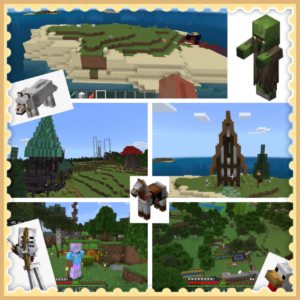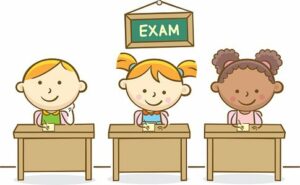
Teaching is like Playing Minecraft
Sara McManus
School of Education, University of Northern British Columbia
EDUC 394: Theory in Context
Dr. David Litz
September 24, 2021
Kids seem to play Minecraft for hours on end. What could keep them entertained for so long? They can play every day for weeks, months, years, and now some have played for over a decade. Some tech-savvy teachers have elected to embrace Minecraft in their classrooms. They harness their students’ love of the game to teach science, Math, and English curricula. “Not only has it been one of the most downloaded games ever, but current players have maintained their loyalty. That may be because there’s really no way to ever “master” or grow tired of Minecraft” (CTVNews.ca, 2014). The act of playing Minecraft is analogous to that of teaching. Like players in the game, teachers develop and hone their skills over their careers.
To start a new game of Minecraft, a player lands in an undeveloped world on a plot of land. Players never know what type of biome they will drop into; it could be a deserted island, a grassland filled with wildflowers, or a wild, dark jungle filled with zombies. Each biome is unique, like an individual school. New teachers are especially susceptible to finding themselves dropped into an empty classroom with little to no preparation time. It takes time to familiarize oneself with the lay of the land and the resources available in both the game and a new school. Players can select from either Creative Mode or Survival Mode. Teachers are always in Survival Mode! Most new players have a friend or two to help guide them through their first adventure. For teachers, this would be their training and certification process.
A player needs to start with the essentials to make it through their first day in Survival Mode. Minecraft “mimics the human experience” through Maslow’s Hierarchy of Needs (AntiValentine, 2021). Food and shelter come before anything else. The rules of play are the same in every world and for every player. It is inevitable that night will come when the sun goes down, creepers will explode a special build, and that everyone at some point will want to scream or cry when they unexpectedly die. Similarly, new teachers quickly learn that they can only accomplish so much in one day; sometimes plans get ruined by surprise events, and somedays they will want to scream or cry. However, the joys and personal self-fulfillment from achievement far outweigh the occasional frustration. The feel-good moments of learning a new crafting recipe, building a fancier house, or finding a diamond are just the same in teaching too. Teachers consistently update their skills, refresh their lesson plans, and take joy seeing a child’s eyes light up when they recognize their accomplishments.
A Minecraft player never stops learning. Players learn through experimentation, reading, watching videos, collaboration with peers, and networking online. The game itself is constantly undergoing updates and expansions for technological advances, just like education, and resources are available for beginners through advanced players. Minecraft can be played individually or as a collective. If problems are encountered, there are millions of other players in the world to reach out to for advice and inspiration. Minecraft can look very simple to the untrained eye, but it can be highly complicated and intricate. The game can be multifaceted, sometimes weaving many different layers of processes into just one seemingly small finished item. Similarly, teachers commit to professional learning through BC Standard #7 (BC Teachers’ Council, 2019). As a teacher goes through their career, they will develop their skills of multi-tasking, and with their growing knowledge base, extremely complex students, classes, and situations sometimes seem to appear effortless to the general public.
Beginners and seasoned players alike are challenged in Minecraft. When beginning with a wooden sword crafted from a tree chopped with a bare hand, a spider attack can be a terrifying ordeal. Yet, advanced players enter hidden nether-worlds filled with lava and fire-throwing creatures that a player would not dare to enter without thoroughly enchanted diamond weapons and armour. However, the simple spider can still sneak up and surprise a pro-player, just like students can continue to shock veteran teachers. Teachers navigate endless obstacles throughout their careers. They need to be flexible and able to change plans on the fly. Teachers must have the foresight to build solid foundations that will not easily break.
There are one hundred and fourty million active Minecraft players worldwide, and the game has sold over 200 million copies since its release in 2011 (Clement, 2021). Many players love the game and stick with it for a very long time. Analogous with Minecraft, there can be endless inspiration, learning, and collaboration when teachers utilize their autonomy for creativity. When a teacher loves teaching, they understand that they will never master it or grow tired.
References
AntiValentine. (2021, March). Minecraft Psychology – Maslow’s Hierarchy of Needs. [Video]. YouTube. Retrieved from https://www.youtube.com/watch?v=bQ3r57Du4-4
BC Teachers’ Council. (2019, June 19). Professional Standards for BC Educators. [PDF]. September 26, 2021, https://www2.gov.bc.ca/assets/gov/education/kindergarten-to-grade-12/teach/teacher-regulation/standards-for-educators/edu_standards.pdf
Clement, J. (2021, May 3). Statista Inc. www.statista.com: [Website].
https://www.statista.com/statistics/680139/minecraft-active-players-worldwide/
CTVNews.ca. (2014, September 15). Minecraft: Why are kids, and educators, so crazy for it? [Article]. https://www.ctvnews.ca/lifestyle/minecraft-why-are-kids-and-educators-so-crazy-for-it-1.2006975
McManus, Sara. (2021, September). A Minecraft Collage: Screenshots of original works by Duncan McManus. [Photo].


